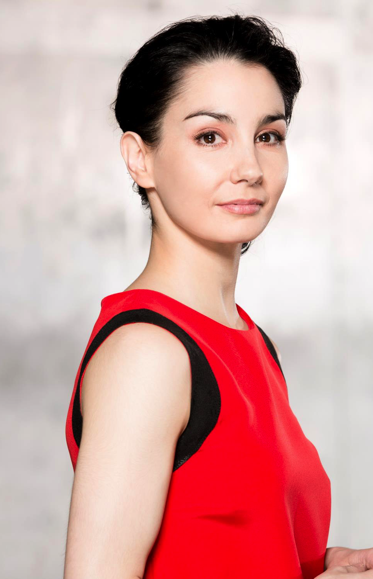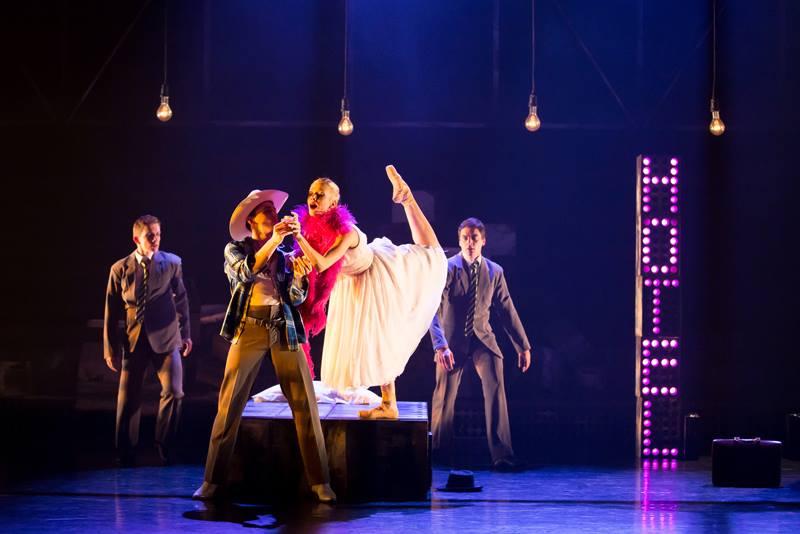
Does gender, rather than talent, determine which choreographers get commissions? We report on the state of an increasingly heated debate.
Towards the end of her 10-year tenure as Director of Britain’s Royal Ballet, Dame Monica Mason was asked why she had never commissioned a work by a female choreographer.
This was her reply: “quite simply, I have not come across one that I felt was suitable. Choreography is not a gender issue – it is an issue of talent.”
Ouch.
Eat your heart out, Crystal Pite. Helen Pickett. Shobana Jeyasingh. Annabelle Lopez Ochoa, et al.
Sorry, ladies, you’re quite good but… how to put this?… not good enough for the august Covent Garden stage. Too… “not classical” maybe? Too… contemporary? Not as contemporary, though, as Wayne McGregor, whom Dame Monica appointed Resident Choreographer at the Royal Ballet.
Go figure.
The debate on the continuing failure of top ballet companies both in Britain and across the world to commission new work from women choreographers has been flaring up regularly over the past 10 years or so.
Just last October Rambert held a one-day symposium on this question. That in itself was interesting. More interesting, perhaps, is that a very similar, if not identical event was held in 2009 at the initiative of Dance Umbrella and Dance UK.
That was meant to lead to changes and progress. In reality, nothing much seems to have changed in six years.
Just a few days ago a press release landed in my inbox. Edge, the London Contemporary Dance school post-graduate dance company, is touring 15 venues and six countries with a programme of new works.
All four featured choreographers are men.
And so the debate rages on.

Never one to miss an opportunity to throw down the gauntlet, English National Ballet’s Artistic Director Tamara Rojo has stepped in with She Said, a programme of specially commissioned works by women choreographers for ENB’s Spring period. It will feature Annabelle Lopez Ochoa, Yabin Wang and Aszure Barton.
This is how Rojo explained her decision:
“I had the idea for female choreographers four years ago before the current debate started. My original motive was simple: I had never done a piece by a female choreographer. In the theatre the dynamic of the piece is always from a male perspective.”
If you think about it, from its beginnings with its ethereal sylphs all the way to the modern-day fashion of women being manipulated and passed around the stage splayed crotch foremost, ballet has always obeyed a very male view of what women are, or should be like.
It seems that in the field of decision-making, the perspective is also very much male.
The immensely talented British-based Spanish dancer and choreographer, Avatâra Ayuso, has thought about this a great deal. Recently honoured with a nomination for the Emerging Artist Award in the 2015 National Dance Awards, she describes her attempts to get funding for her choreographic projects as a permanent struggle.

“The directors of the institutions who have the power to commission are men. Society is ready for half and half (…) but those that run the institutions don’t do enough research to find male and female choreographers. They just go with the habit of having male choreographers.”
She goes further:
“They don’t want to take risks! I think having a woman is also taking a risk, because they don’t know what we can do.”
Or as the American choreographer Elizabeth Streb bluntly puts it, “people like giving money to men.”
Despite the glaring omission of women from the forthcoming Edge programme of contemporary dance, gender inequality seems more acute in classical ballet than in contemporary. Women have, after all, played a key role in the development of the very concept of contemporary ballet, its themes and its language.
The roll call of female giants of contemporary dance is long and awe-inspiring.

Isadora Duncan. Martha Graham. Pina Bausch. Twyla Tharp. Lucinda Childs. Crystal Pite…Just a few names of out of a list too numerous to call in full.
But look at classical ballet.
Not even fact that ENB’s new crowd-pleasing and hugely successful production of Le Corsaire was re-choreographed by a woman, Anne-Marie Holmes, seems to have given major companies an incentive to follow suit.
Full kudos, then, to Scottish Ballet, for commissioning not one woman but two – choreographer Annabelle Lopez Ochoa and film director Nancy Meckler – to create its dance version of Tennessee Williams’s A Streetcar Named Desire in 2012.

It paid off. The ballet was nominated for the Olivier awards and won the Critics’ Circle Best Dance Production and the South Bank Best Classical Choreography awards.
Next on Scottish Ballet’s list is a new commission from Crystal Pite, and perhaps even more significantly a new piece from its budding in-house choreographer, the young dancer Sophie Laplane. Both will feature in the company’s 2015/16 season.
Defenders of the status quo look at such successes and argue that, in the words of (male) dancer and choreographer Akram Khan, “we don’t need more female choreographers for the sake of it.”
Or, as the Spectator ballet critic Ismene Brown put it, “I’m having trouble finding an anti-woman conspiracy in dance.”
To which The Observer ballet critic Luke Jennings, responded in characteristically trenchant fashion by pointing to “a gender imbalance so egregious, and of such long standing, that it shames the British dance establishment.”
Jennings argues that in contemporary dance “the more large-scale and high-profile the commission, the smaller the probability that it will be awarded to a woman.”
And he goes on, “In classical dance, female choreographers face even greater discouragement.”
The last time the Royal Ballet commissioned a female choreographer to create work for its main stage was in 1999 (pre-Dame Monica’s directorship, obviously…): Siobhan Davies’ A Stranger’s Taste.
This imbalance in Covent Garden is mirrored in some of the major international companies.
Women may have been Balanchine’s muses, but no new works for New York City Ballet bear the imprint of a woman choreographer.
And for all his protestations that he wanted to drag the Paris Opera Ballet kicking and screaming into the 21st century, Benjamin Millepied filled his first (and as it turned out his last) season in Paris with the works of male choreographers – McGregor, Peck, Wheeldon, Ratmanski… and more.
Here’s the problem. Talent is subjective. You can always argue, as Monica Mason did, that she couldn’t see enough of it to justify a commission.
In other areas that fall under anti-discrimination laws compliance is easier to measure. But how do you “measure” talent?
Nevertheless, there is clearly a predisposition on the part of those who commission to give men, rather than women, a chance to prove their talent. And a chance to fail and try again.
So, in the cogent words of Luke Jennings, “it’s time for dance to shed its institutionalised sexism, to rid itself of the whiff of privileged boys’ clubs and backstairs deals and join the artistic mainstream.”
ENB’s She Said will be an important step in that direction.
However, it will probably be judged almost exclusively in terms of gender; and that will, to a certain extent, obscure an objective assessment of the works’ artistic merit.
I would argue that it’s only when a programme on any dance stage – august or less so – is made up of works by both male and female choreographers and the focus of attention are the works themselves rather then the gender of their creators that a proper balance will have been achieved.
Avatâra Ayuso has been very active in the campaign for a level playing field for female choreographers. She welcomes the current debate:
“I think the issue should be out there. We’re not silly girls waiting for things to happen. No! No, no! It’s good that people get to know what’s going on. In fact, I have my own kind of survey that I normally do with people who are not dancers. I ask them, “so, was it a male or female choreographer?” They answer, “oh, I don’t know!” They don’t care. They just want to see quality.”
Teresa Guerreiro
e n d
For a full list of all our blogs click here
